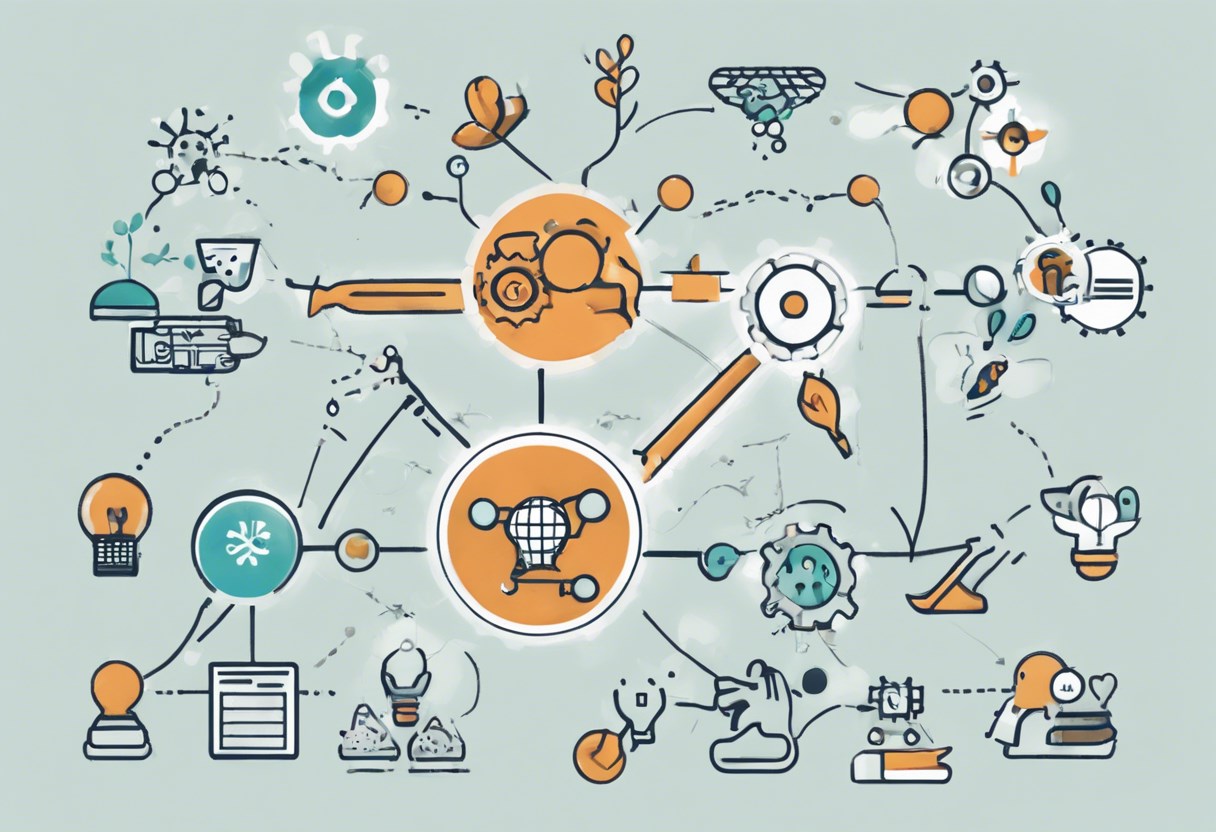Upstream vs. Downstream Marketing: Key Differences

In today’s competitive marketplace, understanding the nuances between upstream and downstream marketing is essential for crafting effective strategies. While each approach targets different stages of product development and customer engagement, their integration is crucial for business success.
This article explores the key differences between upstream and downstream marketing, how they can be utilized together, and their impact on product development and customer behavior. Let’s dive into the pivotal roles these marketing strategies play in shaping market trends and driving business growth.
What Is Upstream Marketing?
Upstream marketing refers to the strategic process that focuses on identifying and understanding customer needs, market trends, and potential opportunities long before a product is developed. It involves thorough market research, analysis, and the development of a product concept that aims to fulfill the future needs or desires of a target market. Upstream marketing is all about looking ahead, anticipating shifts in the market, and positioning a company to meet those changes head-on. This proactive approach helps businesses to innovate and create products that not only meet but exceed customer expectations.
What Is Downstream Marketing?
Downstream marketing concentrates on promoting and selling an existing product. It is the tactical execution that follows upstream marketing’s strategic planning. This phase involves advertising, sales promotion, and leveraging channels to ensure the product reaches the end consumer effectively. Downstream marketing aims to enhance product visibility, stimulate demand, and ultimately drive sales. It’s about crafting compelling messages, choosing the right mix of marketing channels, and engaging directly with customers to persuade them to purchase.
Upstream vs. Downstream Marketing: Key Differences
Understanding the distinctions between upstream and downstream marketing is vital for crafting a comprehensive marketing strategy. While both are essential components of the marketing process, they focus on different stages of product development and market engagement.
Focus Area
Upstream marketing concentrates on product development, market research, and identifying future opportunities. In contrast, downstream marketing focuses on product promotion, sales strategies, and direct customer engagement.
Strategic vs. Tactical
Upstream marketing is strategic, emphasizing long-term market positioning and product concept development. Downstream marketing is more tactical, addressing immediate sales goals and customer acquisition strategies.
Target Audience
The target audience for upstream marketing includes internal stakeholders, investors, and potential business partners. Downstream marketing targets end consumers and clients, aiming to influence their purchasing decisions.
Goals and Objectives
Upstream marketing aims to identify customer needs and market trends to innovate and develop products that fulfill future demands. Downstream marketing’s goal is to maximize product visibility, stimulate demand, and drive sales.
Tools and Methods
Upstream marketing utilizes tools like market research, SWOT analysis, and customer feedback to inform product development.
Downstream marketing relies on advertising, sales promotions, social media, and direct marketing to reach consumers. The selection of specific channels and lifecycle marketing tools depends on the stage of the customer journey the prospect is currently in.
Using Upstream and Downstream Marketing Together
For a business to thrive, it’s crucial to blend both upstream and downstream marketing seamlessly. This integrated approach ensures a company not only develops products that meet future market demands but also effectively communicates and sells these products to its target audience. Here’s how businesses can use upstream and downstream marketing together to create a cohesive strategy:
- Strategic Alignment: Align upstream and downstream marketing efforts by ensuring that the product development insights influence the promotional strategies. This alignment helps in creating marketing messages that resonate deeply with the target audience’s evolving needs.
- Continuous Feedback Loop: Use downstream marketing to gather customer feedback and market responses. This information should then inform upstream marketing strategies to refine product development and address customer preferences more accurately.
- Market Adaptation: Upstream marketing’s focus on future trends combined with downstream marketing’s real-time data on consumer behavior allows businesses to adapt quickly to market changes. This flexibility is key to staying competitive in fast-evolving industries.
- Cross-functional Collaboration: Encourage collaboration between teams responsible for upstream and downstream marketing. This synergy fosters innovation in product development and effectiveness in market penetration strategies.
- Consistent Branding: Ensure that the brand message is consistent across both upstream and downstream activities. A unified brand voice strengthens brand identity and aids in building customer trust and loyalty.
Integrating upstream and downstream marketing enables businesses to not just meet current market demands but also to anticipate and shape future trends. This comprehensive approach is instrumental in building a strong, resilient brand that thrives across different market conditions.
FAQ
How Do Upstream and Downstream Marketing Impact Product Development?
Upstream marketing plays a pivotal role in product development by ensuring that customer needs and market trends are at the forefront of the product concept. Through extensive market research and analysis, upstream marketing influences the direction and features of a product before it enters the development phase. Downstream marketing, on the other hand, impacts product development by providing valuable feedback from the market and end-users. This real-time data can lead to product adjustments, improvements, and innovation to meet customer expectations more effectively. Together, they ensure a product is both well-conceived and responsive to market feedback.
How Can Businesses Strike a Balance Between Upstream and Downstream Marketing?
Striking a balance between upstream and downstream marketing requires a strategic approach that values both long-term vision and immediate market engagement. Businesses can achieve this balance by:
- Clearly defining roles and objectives for both marketing approaches.
- Establishing regular communication and collaboration between teams responsible for each type of marketing.
- Using data and insights from downstream marketing to continuously inform and adjust upstream activities.
- Ensuring that brand messaging and goals are aligned across all marketing efforts.
- Allocating resources and budgets in a way that supports both upstream innovation and downstream sales tactics.
Efficient alignment of upstream and downstream marketing ensures that a business is innovative, responsive, and consistently engages its target audience.
How Do Upstream and Downstream Marketing Affect Customer Behavior?
Upstream and downstream marketing together play a crucial role in shaping customer behavior. Upstream marketing affects customer behavior by driving product innovations and improvements that meet or exceed future customer expectations, thereby influencing customer needs and desires. Downstream marketing directly affects customer behavior through targeted campaigns and promotional activities that encourage product trial, purchase, and loyalty. By effectively communicating the value and benefits of the product, downstream marketing strategies aim to convert interest into action. Combined, these marketing approaches not only attract customers but also cultivate long-term relationships built on satisfaction and trust.
Final Thoughts
Both upstream and downstream marketing are integral components of a successful business strategy, each playing its unique role in the lifecycle of a product. Upstream marketing sets the foundation for a product’s development by focusing on long-term goals and market needs, while downstream marketing takes the baton to promote and sell the product to the end consumer. The symbiotic relationship between these two approaches ensures that a business can not only anticipate future market demands but also effectively communicate and distribute their innovations. Striking a balance between upstream and downstream marketing, therefore, is essential for businesses aiming to remain competitive and responsive to market and customer behaviors. By understanding and implementing both strategies effectively, companies can create a robust framework for sustainable growth and market relevance.






